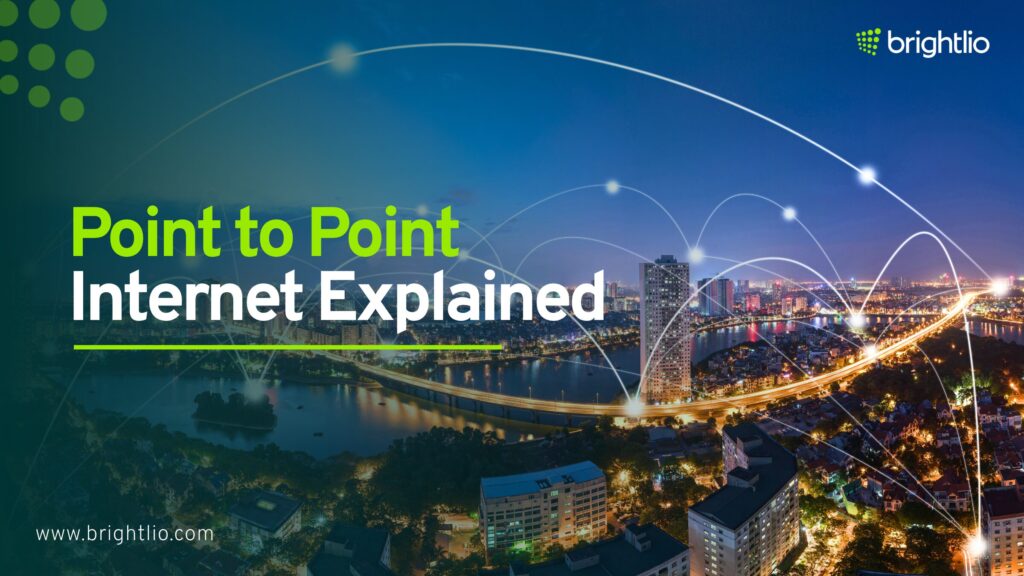
Table of Contents
Point to Point Internet Explained
Many businesses are exploring more secure internet options to improve their cybersecurity posture. Point-to-point internet (P2P or PTP) is a more secure alternative to broadband. Point to point connectivity joins networks by creating a direct connection between them.
Point to point internet is increasing in popularity. The market is projected to hit $5 billion in 2023 from $3.6 billion in 2020. Continue reading as we explain point-to-point internet technology and its benefits.
What is Point-to-Point Internet and How Does it Work?
A point-to-point internet connection is a straight line of communication between two or more locations. Point to point connections are direct, without the need for intermediary devices such as routers or switches. Point to point connectivity is delivered via several delivery mechanisms. The most common delivery mechanisms include:
1. Microwave Internet
Microwave delivery uses high-frequency radio waves to establish a direct link between two devices. This technology is used for P2P connectivity in remote areas with limited traditional wired connectivity options.
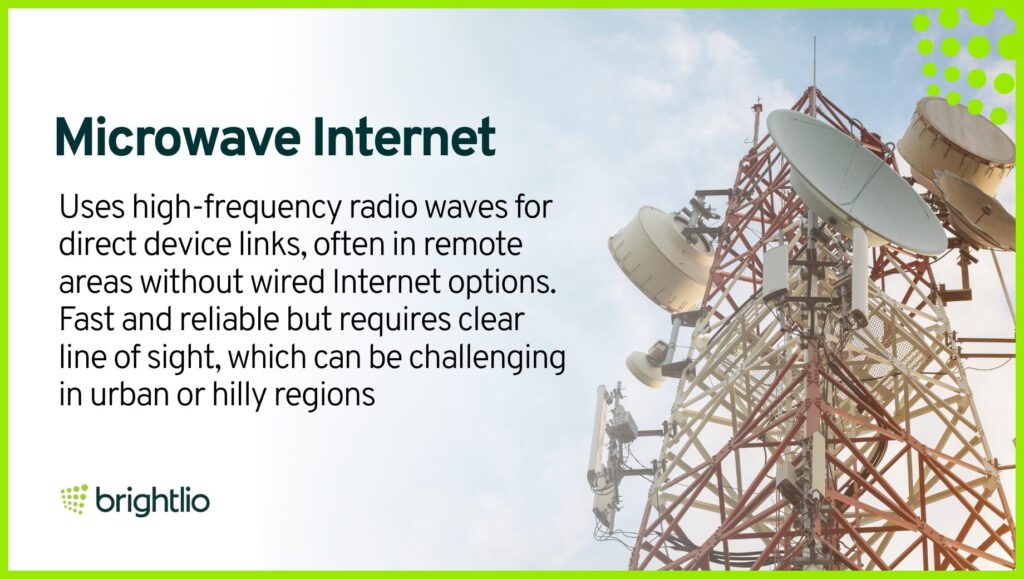
Microwave delivery is fast, reliable, and secure, making it an ideal option for businesses requiring a high-speed connection with minimal downtime. However, microwave requires a clear line of sight between the two transmitting devices, which can be difficult in urban areas or areas with hills and trees.
2. Millimeter Wave Internet
Millimeter wave technology is a newer delivery mechanism for P2P connectivity that uses very high-frequency radio waves to establish a direct link between devices. This technology is faster than microwave delivery and can provide higher bandwidth. Millimeter wave is ideal for businesses requiring high-speed connections for data-intensive applications such as video conferencing or file transfers.
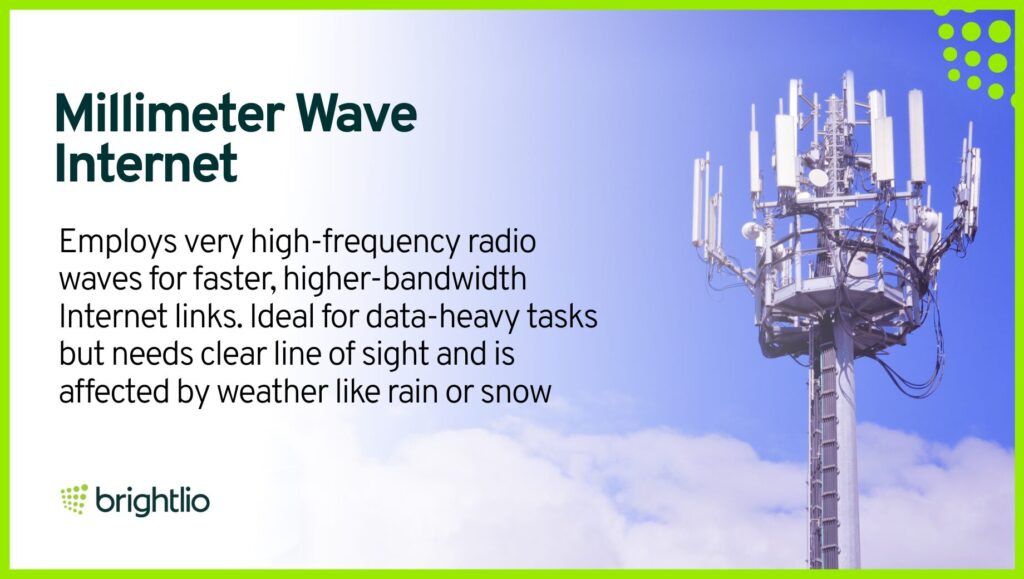
However, millimeter wave technology also requires a clear line of sight between the two devices and is susceptible to interference from weather conditions such as rain or snow.
3. Laser Internet
Laser delivery uses focused beams of light to link two locations directly. This technology is faster and more secure than radio-based delivery mechanisms.
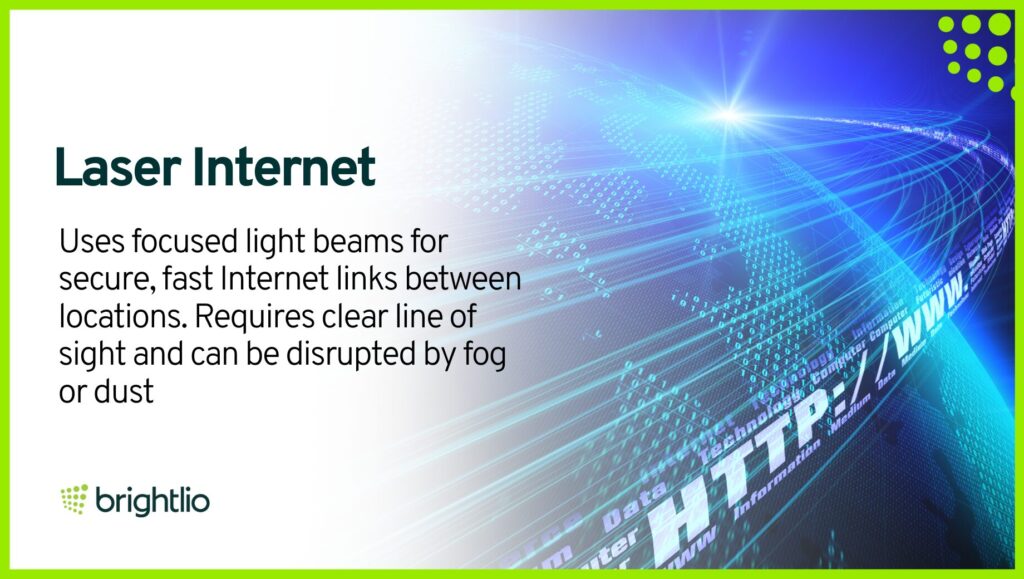
Laser delivery also requires a clear line of sight between the two devices and is susceptible to interference from atmospheric conditions such as fog or dust.
4. Satellite Internet
Satellite delivery uses orbiting satellites to establish a direct link between devices. It is used frequently for P2P connectivity in remote or rural areas where traditional wired connectivity options are limited or nonexistent.
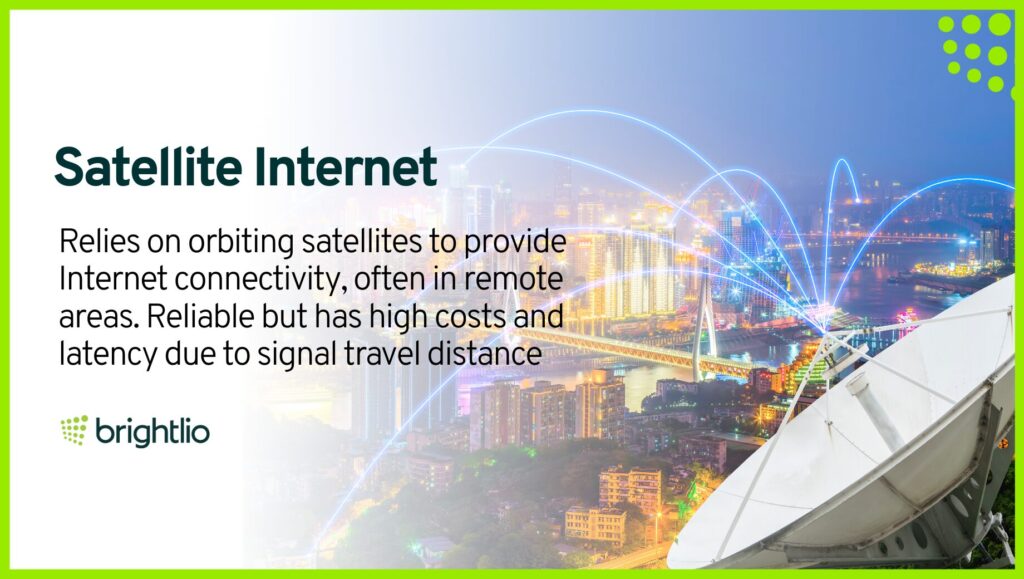
Satellite delivery is fast and reliable but expensive and may suffer from latency due to the distance the signal must travel.
Why Should You Choose Point-to-point Internet?
There are many reasons to choose point-to-point internet for your business instead of other private WAN services. Let’s go over some of them together.
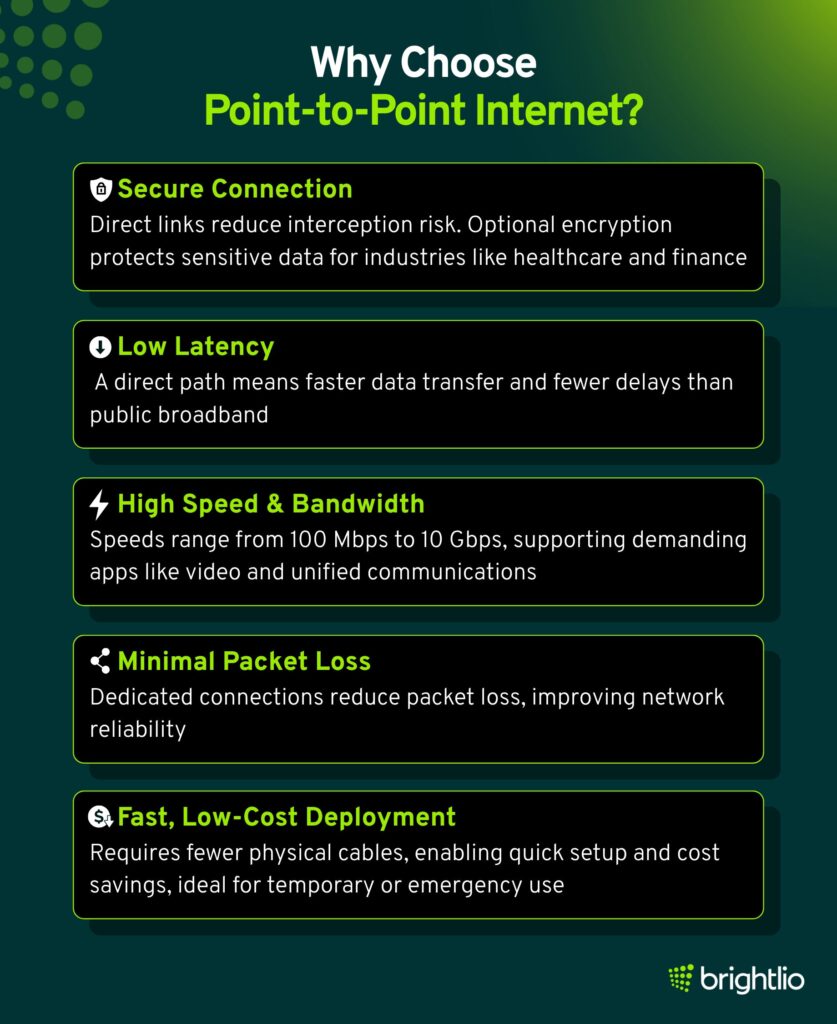
1. Secure Connection
A point to point connection is more secure than broadband. P2P provides a direct link between devices, so there is less risk that the data is intercepted.
P2P connectivity can also be encrypted, providing an additional layer of security to prevent unauthorized access to sensitive data. Encryption is ideal for businesses that handle confidential or sensitive information, such as government agencies, healthcare providers, and financial institutions.
2. Low Latency
Latency is the time it takes for a data packet to go from one place to another. A point-to-point internet connection delivers minimal latency because there is one straight line of communication. Fewer hops and a more direct path provide lower latency.
Conversely, public internet options like broadband mean data bounce between different points before reaching its destination. P2P connection enables you to transmit data faster by avoiding rerouting, with the added advantage of keeping your information safe.
3. High Internet Speed and Bandwidth
Various factors, such as the distance between the points, affect a P2P internet connection’s bandwidth and speed. Newer point to point technologies are capable of delivering bandwidth comparable to traditional physical connections. High bandwidth is essential, especially with latency-sensitive applications like unified communications and video.
A P2P connection can give you speeds ranging between 100 MBPS and 10 GBPS. For wireless point-to-point, speed also depends on the distance between antennas. For example, an antenna with a 2.4GHz frequency could get you 170 MBPS over a nine-mile distance. Additionally, many P2P communication endpoints now run with Wi-Fi protocols like 802.11ac. 802.11ac delivers speeds up to 7 Gbps.
4. Minimal Packet Loss
In networking, data is broken down into smaller chunks called packets. The internet breaks data into packets and sends them to their destination. When packets are not delivered, you get packet loss. Packet loss requires packets to be resent, which leads to performance degradation.
In a P2P connection, all the packets move on a direct, dedicated path between two points. A direct connection lowers packet loss and delay.
5. Faster and Lower Cost Deployment
P2P connectivity can be deployed quickly, making it an ideal option for businesses that require a faster, lower-cost installation. Fiber or copper infrastructure requires trenching and the installation of physical cables. This can be extremely expensive, requires permitting from the city, and is time-consuming.
P2P connectivity requires the hardware on either end of the connection to transmit and receive the wireless signal. This means a point-to-point connection can be deployed more quickly and cheaply than physical connectivity. P2P is also an excellent option for temporary or emergency internet services.
Point-to-Point Internet Connection Pricing
Point‑to‑point internet connections often cost very little upfront, typically between $500 and $2,500 when existing infrastructure is available, and usually avoid trenching or permitting expenses. Ongoing monthly costs depend mostly on bandwidth needs, which can range from 5 Mbps to 100 Gbps, and remain competitive.
Wireless links stand out because they install quickly and can pay for themselves within a few weeks when fiber prices are high. Longer contracts, such as three‑ or five‑year terms, usually come with lower rates than short‑term or month‑to‑month agreements. Brand‑new installations can run into several thousand dollars if construction is required.
As competition from dark fiber and wavelength services has grown, prices have steadily decreased in recent years, while uptime can reach 99.999% and coverage can extend up to 50 miles for wireless links.
| Component | Estimated Range |
| Setup/Installation | $500 – $2,500 per link |
| Monthly cost | Varies widely; often similar to setup fee monthly for modest links |
| Bandwidth | From 5 Mbps up to 100 Gbps (modern links) |
| Pricing trend | Lower overall now compared with legacy leased lines |
Brightlio Can Help With P2P and Other WAN Solutions
Are you looking for the best connectivity option for your business? Brightlio can help! We leverage our global network of connectivity partners to deliver the optimal solution for your needs and budget. Whether you need a point to point connection, dark fiber, lit fiber, MPLS, or broadband, we have solutions that will exceed your expectations.
We also offer technology solutions like unified communications, colocation, public cloud, SD-WAN, and advisory services allowing us to deliver a holistic technology solution for your business.
We are committed to being your most trusted and responsive technology provider. Get started with Brightlio today.
Did you enjoy this read? Well then, check out our article on The Pros and Cons of SD-WAN.
FAQs
1. What is a point‑to‑point internet connection?
A point‑to‑point internet connection is a dedicated, private link between two endpoints—such as two offices or a branch and headquarters—offered by ISPs using technologies like leased lines or optical fiber.
2. How does point‑to‑point differ from public internet or broadband?
Unlike shared broadband, which travels over multiple hops and is shared by many users, P2P provides exclusive bandwidth over a fixed circuit. That yields more consistent performance, lower latency, and tighter SLAs.
3. What technologies are used to build point‑to‑point connections?
Common implementations include:
- Wired — copper (T1/E1), fiber leased lines, Ethernet private lines
- Wireless P2P — microwave or laser links between fixed points
- Point-to-point MPLS VPNs (pseudowires) — virtual leased‑line services over shared backbones.
4. What are the main advantages of P2P connections?
- Dedicated bandwidth and symmetric speed, ensuring stable throughput
- Consistently low latency and jitter, ideal for voice, video, and financial systems
- Greater security and isolation, since traffic doesn’t transit public networks
5. What are the limitations or downsides?
- High cost—especially for long or high‑capacity links
- Limited scalability—each new site generally requires its own link
- Potential for a single point of failure unless redundant paths are built
6. Who typically needs point‑to‑point internet?
Used by:
- Companies connecting offices or data centers
- Institutions requiring guaranteed high performance (e.g., financial, healthcare, government)
- ISPs or telcos building backhaul infrastructure
- Campuses or buildings requiring secure, real-time inter-site connectivity
7. What performance levels are available with P2P?
Speeds range from hundreds of Mbps up to 10 Gbps+, often symmetric. Wireless P2P links depend on distance, line-of-sight, and frequency bands used.
8. How do point‑to‑point connections compare with VPN and MPLS?
9. What is PPP and how does it relate to P2P Internet?
PPP (Point‑to‑Point Protocol) is a Layer‑2 protocol originally designed for direct serial links (e.g., modem, DSL) between two nodes. Variants like PPPoE (Ethernet) or PPPoA (ATM) are still used to deliver internet over DSL and leased‑line environments.
10. What should be considered when choosing a P2P solution?
Key factors include:
- Bandwidth and latency requirements
- Distance and availability of fiber or line-of-sight
- Provider SLAs and support
- Upfront and recurring costs
- Potential redundancy options
- Compatibility with existing WAN architecture (e.g., integration with MPLS or SD‑WAN)
11. How fast is point-to-point internet compared to traditional broadband?
Point-to-point internet connections often deliver speeds ranging from 100 Mbps to 10 Gbps, depending on equipment and distance. In comparison, typical broadband connections average 100–500 Mbps for fiber and 25–100 Mbps for cable, making point-to-point a better choice for businesses needing high throughput.
12. What is the typical latency of point-to-point internet links?
Point-to-point links have an average latency of 1–5 ms, as they use a dedicated path between two locations. Standard broadband or shared wireless networks often experience 10–50 ms latency due to network congestion and routing complexity.
13. How reliable are point-to-point internet connections?
Point-to-point connections offer uptime of 99.9% or higher when installed with line-of-sight microwave or fiber technology. This is higher than many shared internet connections, which may drop to 97–99% uptime depending on traffic and service provider limitations.
14. What is the coverage range of point-to-point wireless internet?
Typical point-to-point wireless systems can cover distances from 1 km to 50 km. Microwave and millimeter-wave links often maintain gigabit speeds up to 10–20 km, while lower-frequency systems (e.g., 5 GHz) may reach 30–50 km but at lower bandwidth.
15. How much does point-to-point internet cost?
Costs vary widely based on distance and bandwidth. A basic 100 Mbps link can cost $300–$600 per month, while 1 Gbps fiber or microwave links often cost $1,000–$3,000 per month. Installation fees average $1,500–$5,000 depending on equipment and permits.
Recent Posts
10 Largest Underground Data Centers in the World
100+ VoIP Statistics from Credible Sources (Jan – 2026)
10 Largest Data Centres in the UK
Data Centers in Maine – An Overview
Let's start
a new project together



